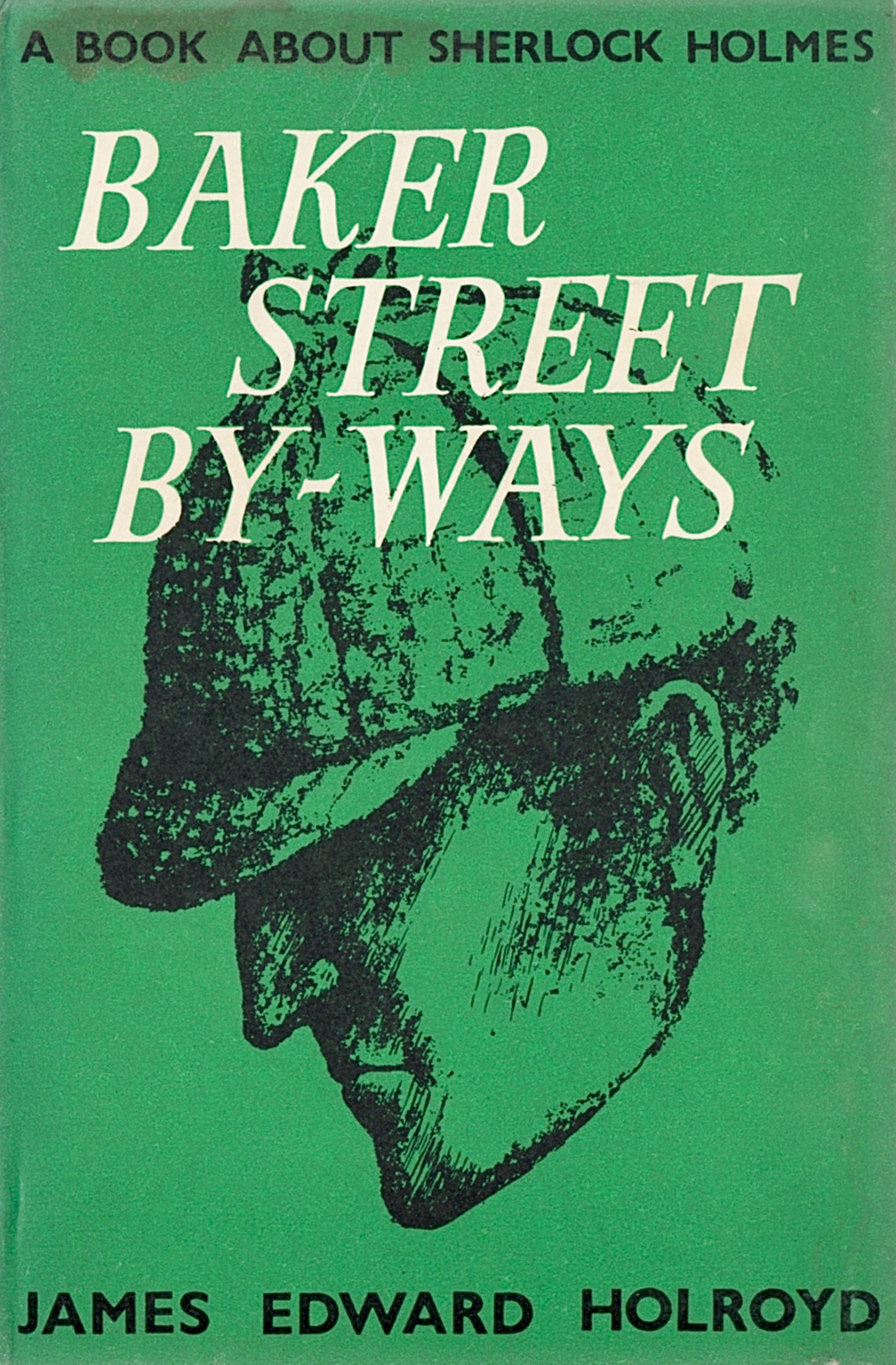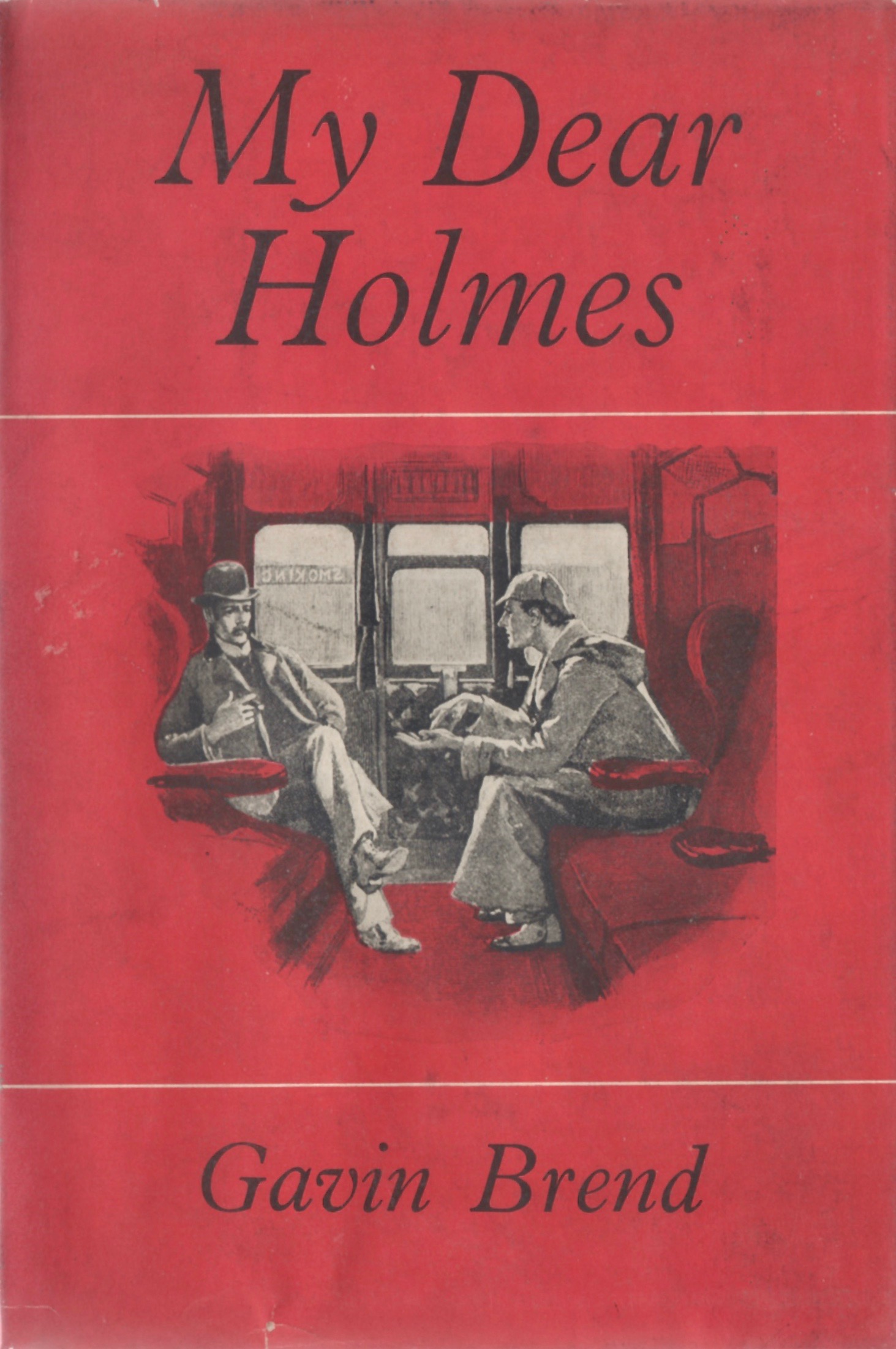Charm and ‘Scholarship’
Private Life Chapter 10: The 1961 British Revised Edition
Back to Britain
The dust jacket copy for Allen & Unwin’s 1961 British edition.
When Vincent Starrett’s book The Private Life of Sherlock Holmes was published in Britain in 1934, there were already a few other books of Holmes essays in circulation. The Holmes movement had been sparked by others in Sherlock’s homeland. Starrett was merely one more voice in the chorus.
Much was the case with Starrett’s revised edition, published in 1961. As had happened with it’s older brother, this edition of Private LIfe appeared one year after it appeared in the United States. In the U.S. the University of Chicago Press published the updated edition, while the British edition had a more mainstream publisher who was already in the Holmes book biography business.
Indeed, the publisher of Starrett’s volume, George Allen and Unwin, used the back of Starrett’s Private Life dust jacket to advertise two other volumes in the same vein that had been out on the seller’s tables for years:
My Dear Holmes (1951) by Gavin Brend and
Baker Street Byways (1959) by James Edward Holroyd.
We will have a bit more to say about these two books later.
But first, let’s look at the book.
The British Revised Edition: A Description
George Allen & Unwin Ltd, London, 1961. Hardcover. Hardcover. 8 3/4" X 6". viii, 156pp, plus one page of advertisements which duplicates the content on the back of the dust jacket.
Cover: Candy apple red cloth over boards. This is the first hardcover edition that had no illustration on the cover.
Spine: The/Private/Life/of/Sher-/lock/Holmes/Starrett in white at head. Allen/and/Unwin in white at tail.
Dust Jacket: Lots of very bright orange! The Private Life/of Sherlock Holmes in white type at top; VINCENT STARRETT also white at bottom, printed over an orange reversed image of Friston’s Holmes from A Study in Scarlet. (This reversed image was also used on the book’s cover in the U.S. Compare the two here. )
Dust jacket spine: The/Private/Life/of/Sher-/lock/Holmes/Starrett in black at head. Allen/and/Unwin in black at tail, both over a field of orange.
Price: 21s. net
Thoughts on The Revised British Edition
Allen and Unwin added a page of ads for their other books at the end of Starrett’s text.
Except for the British publisher’s information, a page of advertisements at the end and similar details, the British edition is very much like its American cousin of 1960. In fact, it appears Unwin and Allen used the same plates to print the text that were used in the States.
It’s worth noting that while Starrett couldn't find a mainstream publisher in the United States, George Allen and Unwin was willing to take a chance on his book in England. I don't have publicity information from the publisher, but the jacket flap seems to give us a good view of how the book was promoted by Allen and Unwin:
“Written with charm and ‘scholarship,’ The Private Life is a semi-serious imaginative recreation of the best-loved character in modern literature. Sherlock Holmes has become more than a legend to the many who believe he really existed on earth. Using as his sources the ‘Sacred Writings’ (i.e. the sixty tales recorded by John H. Watson, M.D.), Mr. Starrett carefully constructs his biography and succeeds in creating a vivid portrait of a man who never lived. Though not seriously intended to be a literary study, the book contains a great deal of valuable information about Conan Doyle and his stories, those ‘best of all fairy tales for adults.’ “
Having published other Holmes books, perhaps Allen and Unwin were a little more willing to take a chance on another Holmes “classic.” Even so, as you can see from the above quote, the publisher took pains to note that Starrett’s book was “not seriously intended as a literary study.”
I wonder what the author had to say about that?
Long before I picked up a copy of this edition, I was familiar with Allen and Unwin. While still a college student, I had picked up a second-hand, late edition copy of J.R.R. Tolkein’s The Hobbit, published by Allen and Unwin. It pleased me to think that my two fascinations had this one publisher in common.
Brend and Holroyd


If you want to know more about these two fine folks, you should pick up Mattias Bostrom’s delightful From Holmes to Sherlock. My point in raising their names is to briefly look at their two books in relationship to Private Life.
In My Dear Holmes, Gavin Brend attempts to put the Holmes stories into some sort of chronological order, a nightmare for any sane person, let alone a Sherlockian. What to do? Brend in his introduction has a suggestion:
“Faced with this conflict of dates I recall that Mr. Vincent Starrett has described the Baker Street of Sherlock Holmes as a fascinating country of the mind, which never existed in reality, where time has no meaning and it is always 1895. No doubt this is shear escapism, but I must confess that for me a world in which it is always 1895 is not without its attractions. I would therefore like to put forward two completely contradictory excuses for this book; first, that it is an endeavor to sort out the conflicting tangle of dates and secondly that I cannot resist writing about events which are ‘always 1895.’ ”
Holroyd, who was chairman of the Sherlock Holmes Society of London at the time Private Life was published, does not offer such a direct link to Starrett as does Brend. But, a review of the chapters in Holroyd’s book shows a strong similarity to Private Life.
Here’s how Allen and Unwin describe it:
“It begins with a profile of the master himself, discussed the illustrators and the true site of 221B and offers a fascinating portrait gallery of characters from the immortal saga touched in with knowledge, good-humour and affection.”
Sounds like a summary of Private Life, wouldn’t you say?
I would normally follow this chapter with one describing the reviews of British critics. However, copyright restrictions make gaining access to those reviews problematic. Instead, the next chapter will deal with two reprints done for the use of public libraries. The chapter is subtly entitled:
U.G.L.Y. You ain’t got no alibi.
